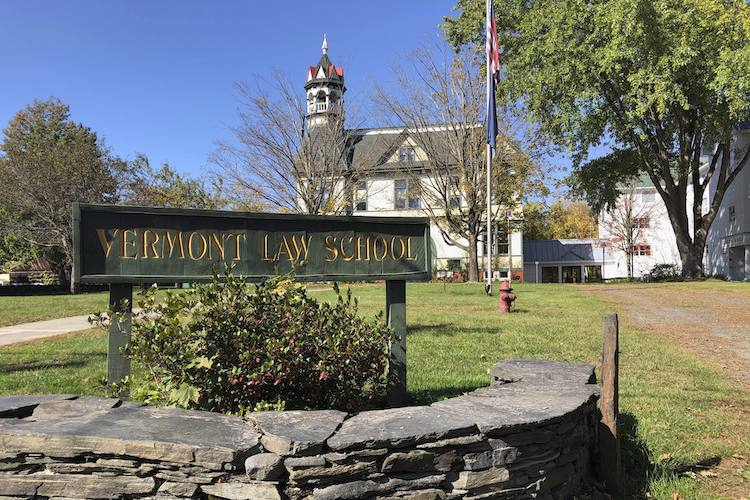'Offensive' murals can be covered, despite federal law protecting artists, 2nd Circuit says

Vermont Law School in Royalton, Vermont, on Oct. 8, 2021. The Visual Artists Rights Act, which was enacted in 1990, protects artists by preventing the modification, and in some cases, destruction of their visual artworks. Photo by Lisa Rathke/The Associated Press.
Murals that are deemed to be “offensive” can be covered up, despite an artist’s objections that such actions violate their rights, according to a ruling by the 2nd U.S. Circuit Court of Appeals at New York.
In an Aug. 18 opinion, the federal appeals court held that “merely ensconcing a work of art behind a barrier neither modifies nor destroys the work, as contemplated by [the Visual Artists Rights Act].”
The federal law, which was enacted in 1990, protects artists by preventing the modification, and in some cases, destruction of their visual artworks.
Courthouse News Service has coverage of the decision.
The dispute involves Samuel Kerson, an artist who painted two large murals that commemorated Vermont’s role in the Underground Railroad on the sheet rock walls of a building at Vermont Law School in 1993. The murals were 8 feet by 24 feet in size and comprised eight scenes spanning the history of slavery in the United States, from the capture of Africans through the abolitionist movement.
Vermont Law School began receiving complaints about the murals in 2001. According to the 2nd Circuit opinion, “viewers perceived the murals as depicting enslaved African people ‘in a cartoonish, almost animalistic style.’” Viewers also voiced concerns over the choice to depict “white colonizers as green, which disassociates the white bodies from the actual atrocities that occurred.”
Calls to remove the murals escalated during summer 2020—after the murder of George Floyd and other Black Americans by police, according to the opinion. Vermont Law School President Thomas McHenry received a petition to remove the murals that was signed by more than 100 students, alumni, faculty and staff.
The law school responded to the concerns that the murals were offensive by first covering them with a cloth and then informing Kerson that it would erect panels to permanently conceal them from the public.
According to the 2nd Circuit opinion, a lower court denied Kerson’s claim that his rights under the Visual Artists Rights Act were violated. The court granted summary judgment to Vermont Law School, which then installed the panels.
“Authors of qualifying works of visual art may invoke VARA to prevent the modification and destruction of their art, albeit with some exceptions. But hiding the murals behind a barrier neither modifies nor destroys them and, therefore, does not violate VARA,” the 2nd Circuit said, in affirming the lower court.
The federal appeals court also noted that the Visual Artists Rights Act does not allow artists to demand that their works remain forever on display.
See also:
ABAJournal.com: “Artist sues law school to stop destruction of his Underground Railroad murals”
ABAJournal.com: “Vermont Law School can cover artist’s slavery murals, federal judge rules”



